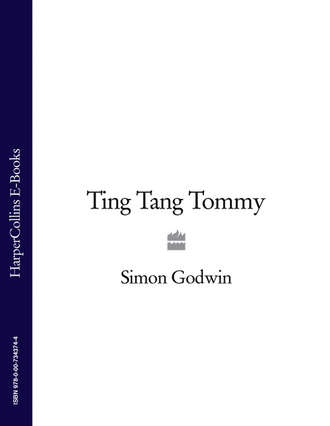
Полная версия
Ting Tang Tommy
It’s a Knockout in Your Living Room
Playing games with lots of people is not easy. Arriving at a party, people’s expectation is to drink a lot and talk. So when someone proposes a game there may be some resistance. There is a failsafe way to short-circuit this and that’s by exploiting the human animal’s competitive gene. As soon as you put people in a team they are overtaken with a desire to win at all costs. Suddenly, you have people obsessed with potential strategies and ways to prove their skills to their team-mates. Everyone becomes desperate to avoid the humiliation of being the one who lost the match.
You will discover how, once a team has played a game together, they become hungry to stay together to play more. With this in mind, I have put together a series of games here that can be played consecutively. If you are feeling really motivated you can create a score board and build up a championship-type vibe. I’m thinking a ‘games decathlon’. You can have an interval halfway through when people can drink and chat before getting going again, with even crazier and more adventurous games.
Slap Penny
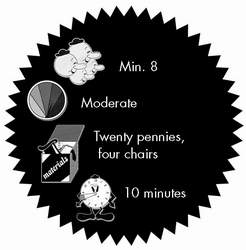
For this game you’ll need two teams with a minimum of four people in each team. The two teams stand facing each other. At either end of each row place a chair (so you’ll need four chairs in total). On the two chairs facing each other at one end of the line, place a pile of ten pennies. When the umpire shouts ‘Go’, the two players on each team standing next to the chairs pick up a coin and place it on their hand. They have to hold their hand and palm upwards, with the penny resting in the palm.
The penny is then slapped from that palm to another and then onto the palm of the next player, who in turn transfers it to his other hand, and so on. The first player palms the coins from the pile as quickly as he can to get as many pennies travelling down the line as possible. The last player in the line drops the coin onto the chair standing beside them.
A penny may never be clutched. If it is dropped, it must be returned to the starting point on the chair. If you really want to test your players, when all ten coins have arrived you can demand that they send them back again. The first team to slap all their coins home wins.
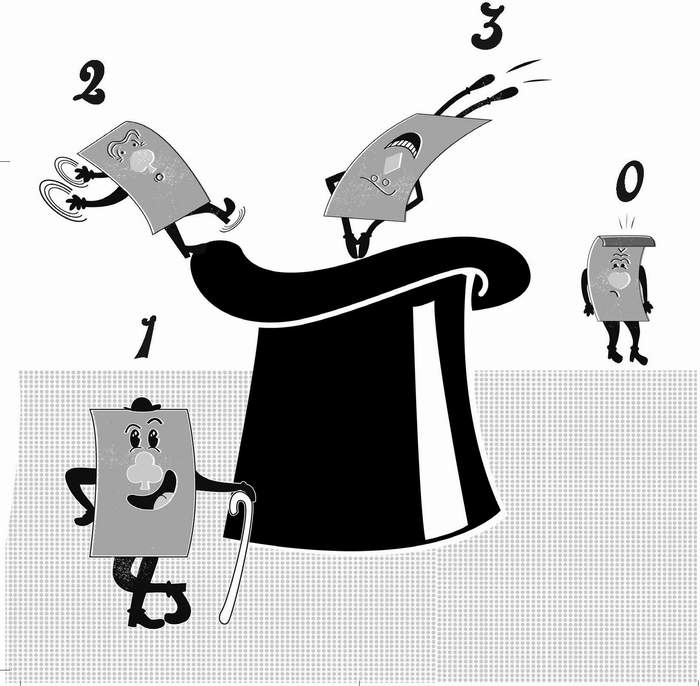
Leaping Cards
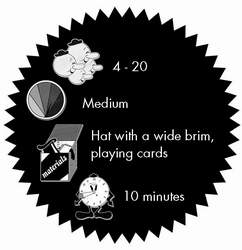
Here I have adapted the original, rather sedate game into a high-octane team competition. The game has acquired a greater urgency as you now have to balance accuracy with speed.
The aim of the game is to be the team that wins as many points as possible. The game ends when one team has managed to throw all their cards.
Begin by spreading a newspaper on the ground and placing your hat in the centre of it. Using a jumper, scarf or the edge of a rug, establish a line around 1.5 metres from the hat. This will be where players throw their cards from.
Divide the company into two teams. Each team is given half a pack of cards. One team has the red cards and the other the black cards. On ‘Go’, one by one a member of each team goes to the line and throws a card towards the hat. For every card that makes it successfully into the hat, players are awarded three points, for any that land on the rim players get two points and for any card that at least makes it onto the newspaper, players get one point. In the fast and furious snowstorm of cards, leave the scoring until all the cards have been thrown.
Both teams scramble to throw their cards as accurately and as rapidly as possible. When one team has succeeded in throwing all their cards, the game stops. At this point the two team captains begin by collecting all their team’s cards that have landed around the room, which are discarded as they are worth no points. They then collect all the cards on the newspaper, which are worth one point. The captains should count as they go, moving on to gather cards on the brim (two points) and then in the hat itself (three points). The team with the highest score wins.
Picture This
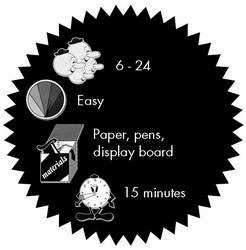
Drawing games are like charades in that they ask for skills that most people don’t have to any great level. This is exactly why they are such fun.
You need a pinboard, which you can cover with sheets of A4 paper, or single sheets of A3, depending on what you have to hand and the size of your board. After forming two teams, each player writes three everyday objects on a different piece of paper and throws those bits of paper into a hat. The game begins with the first player pulling out a piece of paper from the hat and drawing the object on the board, which must be guessed by the rest of her team. Each player is given only thirty seconds to try and draw as many objects as possible. As the names are guessed correctly, the team keeps their papers to add up when the hat has eventually been cleared. The team with the most names at the end wins.
The Sofa Game

This game is a relay race. To prepare, you’ll need two plastic bottles. They can be large mineral water bottles or medium-sized plastic milk bottles. Form two lines. On ‘Go’, the first player of each team must put the bottle between their knees, climb over the sofa, touch the back wall of the room and clamber back again. If the bottle slips from between their legs, they have to stop and replace it. The returning player tags the next in line and the first team to make it home wins.
You should position the sofa in the middle of the room, some way from the back wall. Inevitably, the sofa will tip over with the weight of two players fighting to scramble over it, so you need plenty of space and a light sofa that isn’t going to crush anyone. When I played the game recently it was hilarious seeing a group of people in their early thirties coming up with the most amazingly ingenious solutions to scaling the sofa while maintaining control of their bottle.
Puff Balloon
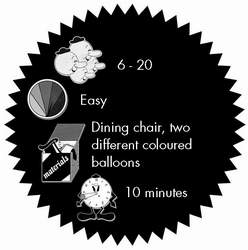
You need two teams with at least three players each. In the centre of a room place a dining chair. Each team is given a balloon. On ‘Go’, the first player in each team sets off to try and blow their balloon underneath the chair to the other side. Once successfully blown under, the balloon is then puffed back directly to the starting line so that the next player can go. The first team to bring all their members home wins.
Players aren’t allowed to touch an opponent’s balloon but they may blow it. This becomes particularly relevant when the balloons clash on entering the vicinity of the chair. As players scramble to get their balloons under the seat, all sorts of breathy interventions are allowed by the two players fighting it out. Those waiting to race, however, must remain behind the line. The only pressure they’re allowed to exert is via cheering.
The Hat Game
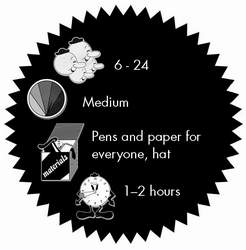
I learnt the Hat Game when I was touring Russia with The Winter’s Tale. A crowd of us were killing time in a dingy hotel in Minsk when someone suggested this game. There couldn’t have been a better place to learn this epic, three-stage event and I’ve been hooked ever since.
Begin by giving everyone a pen and a sheet of paper. Everyone tears up their paper to make seven smaller pieces and writes on each a different name of a well-known public figure. The papers are folded and placed in the hat. You will have plenty of names. The group is then
divided into two equal teams.
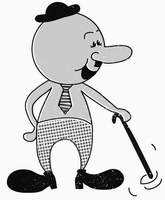
Round two works on the same principle except that now the names are described using three words only. For the game to work you must be very strict. ‘Ums’ and ‘ahs’ are counted as words. If someone says ‘um, ah, celebrity’ then that’s all they’re allowed. No more can be said until the name is guessed. The team may spend the entire minute trying to guess just one name. The stakes are high! As before, when all the names have been guessed teams tot up their total and all the names go back into the hat. Now is the final showdown. In this round players must act out each name. They can break the name down into syllables, as in Charades, or do a silent impression of the character; becoming for a few priceless seconds Winston Churchill, Marilyn Monroe, Amy Winehouse etc. As acting takes longer than speaking, the time is normally extended for this round, with everyone being given two minutes rather than one.
When the hat has been cleared for the last time, the three totals for each round are added up and the team with the largest number wins.
Stop Press. At the time of writing there are rumours of a fourth round. I have never attempted this but my brother, who is a film director and therefore much more glamorous than me, spent New Year playing the game with some members of the Hollywood crowd (the game’s popularity is spreading). They introduced him to this innovation which, he assures me, provides a surreal and hilarious new twist.
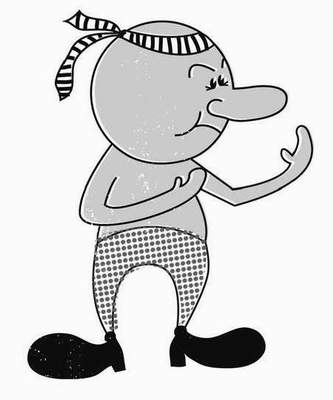
So, for the first time in print:
Players once again remove the names one by one. Now, however, rather than using words or actions, players must make a single sound. This sound must embody the essential characteristics of the name on the paper. It might be a low moan, a triumphant roar, a nervous giggle or a stifled sob. Sounds like a challenge, doesn’t it?
Word Games for Witty People
In sixteenth-century France a new vogue for verbal games took hold. These games were played in courtly circles and were known as jeux d’esprit. They were part of the burgeoning world of the salon and were played alongside discussions of courtly themes such as love, society and politics. These games reached England via some of the first books of games, such as the anonymously written The Mysteries of Love and Eloquence (1658), which describes old word games like Crambo. Many of the games that follow have their beginnings in this early flowering of word games and verbal jousting.
Word games grew in popularity during the nineteenth century and took shape in public events such as the Spelling Bee. ‘Bee’ was a term that became popular in America during the eighteenth century. It was used to describe events where large numbers of people came together—much like bees—to participate in some communal activity. People would gather to weave, spin, make quilts and, eventually, to compete in spelling matches. The first of these Spelling Bees took place in America during the 1870s. The spelling obsession soon made it across the pond and, in 1876, The Leisure Hour
Конец ознакомительного фрагмента.
Текст предоставлен ООО «ЛитРес».
Прочитайте эту книгу целиком, купив полную легальную версию на ЛитРес.
Безопасно оплатить книгу можно банковской картой Visa, MasterCard, Maestro, со счета мобильного телефона, с платежного терминала, в салоне МТС или Связной, через PayPal, WebMoney, Яндекс.Деньги, QIWI Кошелек, бонусными картами или другим удобным Вам способом.




